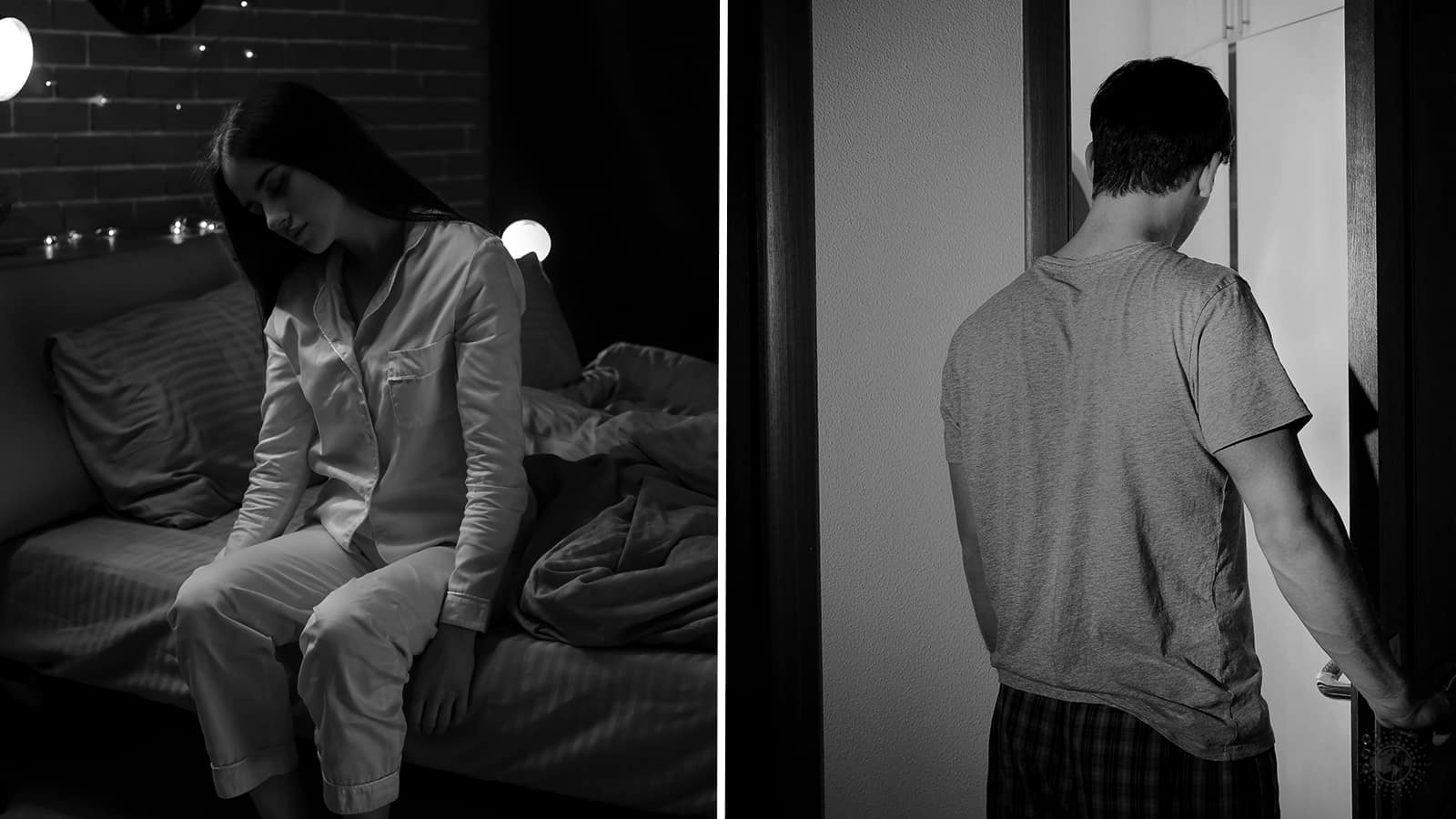When you lie down at night, you hope to stay safe and sound in your bed. If you need to get up to get a drink or visit the restroom, you’re usually at least half-awake and aware of what you’re doing. However, people who walk in their sleep have no realization of their nocturnal wandering.
Walking in your sleep can be quite scary as you appear to be awake, but you’re not. Many people take part in activities and say things they usually wouldn’t when they are at rest. The technical term for sleepwalking is somnambulism, and according to the Mayo Clinic, it occurs more frequently in children than adults.
Understanding the Stages of Sleep
Insomnia is the lack of sleep, but parasomnia is when you’re aroused enough to walk during your rest. To fully understand this medical condition, as there is a lot of sleep myths around, but you must know the different stages of sleep. According to the National Institute of Neurological Disorders and Stroke, there are four stages in your rest, and they are as follows:
• Stage 1
During this stage, the brain is switching over from wakefulness to sleep. There will be just a few minutes where you are lightly sleeping, and during these moments, the body decelerates your heart rate, breathing, eye movements, and brain waves.
• Stage 2
This stage occurs right before your body goes into a deeper state of rest. Your eye movements cease as well as all body movements. An EEG shows brain waves are slow, but there will still be an intermittent burst of electrical activities.
Did you know that you will spend more of your rest time in this phase than in any of the other stages?
• Stage 3
If you don’t make it to stage 3, then you won’t feel refreshed the next day. During this phase, your heart rate and breathing have dropped to the lowest points. It’s hard to wake you from this phase as your muscles are completely relaxed.
• Stage 4
REM is the stage of rest that typically occurs about an hour and a half after you’ve been asleep. You can identify this stage as the eyes are now racing back and forth under your eyelids. The brain waves also change during this stage to a pattern typical of when you’re awake.
Everything in your body goes to a level as if you’re awake, such as your heart rate increases, your blood pressure elevates, and you’re breathing much faster. It’s important to note that your body has become paralyzed as a safety precaution during this state.
This little feature keeps you from acting out your dreams. The older you get, the less time you will spend in this sleep realm. This is where your body gets the restorative rest that it needs to thrive the next day.
Why Do Some People Sleepwalk?
According to the Sleep Association, walking in your sleep is a disorder of arousal. The most common phase for walking during your sleep is in stage three, known as N3. You should note that it’s tough to wake someone when they’re in this state, so therefore it’s hard to wake someone who’s walking/talking.
It’s also possible to have night terrors during this phase, which commonly occurs with other sleep disturbances. Studies have shown that under a great deal of stress, those who are already sleep-deprived and those who have any disruption to their sleep schedule are more likely to sleepwalk. It’s impossible to walk or talk during REM sleep as the body paralyzes itself to keep from harm.
However, you often hear of people being startled out of REM sleep and unable to move for a few seconds. The most common cause of this phenomenon is because the brain is awake, but the body is still asleep as the muscle cannot move. So, the switch between being awake and asleep is malfunctioning. It can be quite a scary experience, but it only lasts for a few seconds.
Historical Accounts of Sleepwalking
Sleepwalking was recognized in ancient times, shares an article published by the Journal of the History of the Neurosciences. According to the report, both Hippocrates and Aristotle wrote about medical anomalies such as these.
Characters who walk in their sleep have also been portrayed in the arts, shares the article. It mentions Shakespeare’s “McBeth” and Eugène Scribe’s La Somnambule as examples. Over the years, sleepwalking has been a staple of comedy routines. However, living with the symptoms of a sleeping disorder is no laughing matter.
Have you or a loved one been diagnosed with somnambulism? Maybe you remember an occurrence when you were a child, or perhaps it’s a recent condition. Since everyone is different, you may have all or a few of these symptoms.
What are the Symptoms of Sleepwalking?
Usually, you will walk in your sleep about an hour or two after you’ve fallen into a deep state of rest. It’s not likely that you would do this activity during a short nap. Walking in your sleep can be an occasional occurrence, or it may trouble you chronically.
Most episodes only last for a few minutes. However, some people may experience an episode that lasts much longer.
Here are some common symptoms of sleepwalking:
•You will rise from your bed and walk around in the room.
•You can sit or stand with your eyes wide open, even though you’re still asleep.
•Your expression may be startled with wide, glassy eyes.
•If others try to communicate, you cannot respond.
•It may be difficult to awaken from this state.
•When you finally awaken, you may be dazed and confused for a few minutes.
•You usually won’t remember the episode in the morning.
•Since your sleep has been disrupted, you may experience brain fog during the day.
•You may have vivid nightmares or terrors along with walking in your sleep.
More Serious Symptoms
•You may do regular activities, like trying to talk, dress, or eat.
•You might try to leave the house or even drive your car.
•Sometimes, you may urinate on the floor because you think you’re in the bathroom.
•In rare cases, you may become violent, as you’re acting out a dream.
•You also risk falling down stairs or trying to jump out a window.
Risk Factors That Cause Sleepwalking
You may have episodes of walking in your sleep if you have any of these risk factors:
1 – Heredity:
Did one or both of your parents have sleepwalking issues? An article from the Sleep Foundation states that 41 percent of children who have somnambulism had one parent with the disorder. When both parents had it, the statistics go up to 61 percent, says the article.
2 – Reactions to Certain Medications
Sedatives are prescription medications that help you relax and sleep. If you are taking these medications, you may go into a deep sleep and experience an episode of somnambulism, says an article published by Sleep Medicine Reviews.
3 – Stress
Although it’s impossible to eliminate all stress from your life, you can reduce it. It can keep your body in a constant state of panic and survival mode. Stress can also cause you to walk in your sleep.
4 – Alcohol abuse
If you are inclined to drink too much alcohol, it can affect your health in several ways. Alcohol has a sedating quality, and heavy drinking knocks you into a deep slumber. These booze binges can often cause somnambulism.
5 – Traumatic Brain Injuries
Brain injuries can cause multiple physical and mental health issues. A study published by the Neuropsychiatric Disease and Treatment Journal found that traumatic brain injuries can disrupt normal sleeping patterns. It can cause sleep apnea, narcolepsy, and walking in your sleep, says the study.
6 – Sleep Deprivation
It’s no wonder that so many people complain that they don’t get enough sleep. When you are juggling caring for your family, working, and other responsibilities, you may feel groggy and drained. Having a sleep debt is just asking for trouble.
Reducing Sleepwalking
The above-listed risk factors are part of the solution. But you might also need to see a doctor. Your physician can order a sleep study and get to the root of your issue. Here are some other things to try at home.
- Manage your stress. If stress triggers sleepwalking, it might be severe enough to warrant a visit to a counselor for help.
- Note the patterns. If you sleep walk at the same time each night, set an alarm and wake yourself up before it begins. This will help you stay safe.
- Establish healthy bedtime routines and habits to help ease yourself into a deeper state of rest.
- Eliminate alcohol if you suspect it contributes to your unrest.
- Visit your doctor. He or she will order a sleep study to help you pinpoint a cause.
Final Thoughts on Understanding and Reducing Sleepwalking
Sleepwalking is a common occurrence, but it occurs mostly in people under a great deal of stress, suffering sickness, or those who have had their sleep schedule disrupted. Thankfully, there are things you can do to combat this problem. If you notice that you have an ongoing issue with walking during your sleeping hours, it’s best to have a sleep study to see if there is an underlying issue.
Many people have sleeping disorders that can be quite dangerous. From night terrors to acting out your dreams, there’s a reason why the body paralyzes you during your rest to keep you safe. There have been many cases of people committing horrible acts while stuck in this sleep/dream realm.
Who can forget the horrifying case where 24-year-old Kenneth Parks drove over 14 miles and killed his mother-in-law? Sure, this is an extreme example of what can happen to those who walk in their sleep, but it’s something to consider.
The jury acquitted him of all charges because it was proven he was asleep during the entire event. Sleep disorders are severe, and if you have any issues with walking or night terrors, you need to seek help immediately.
















 Community
Community

